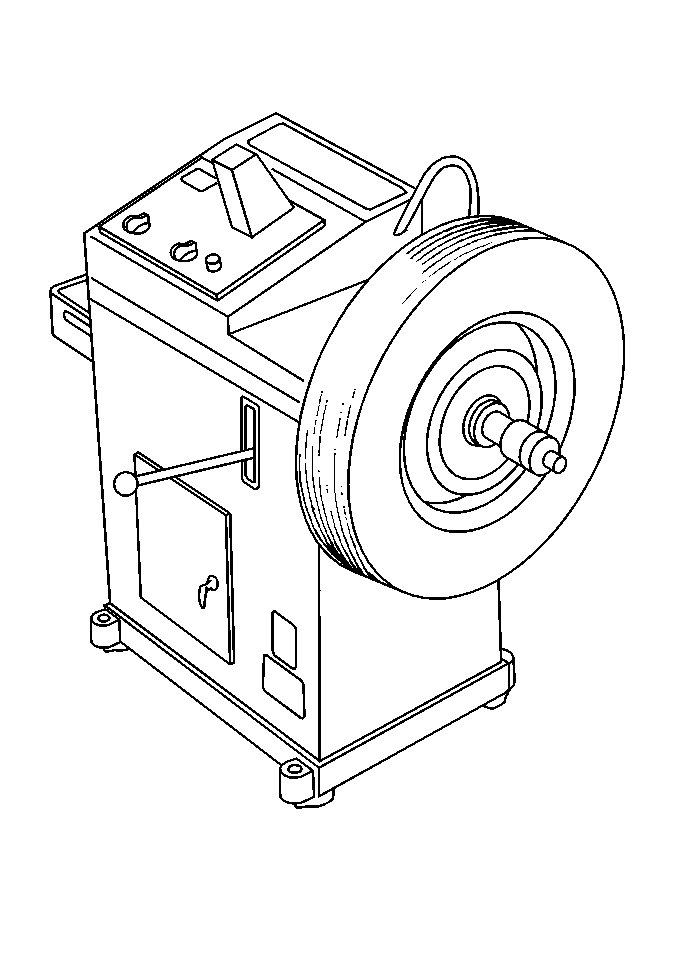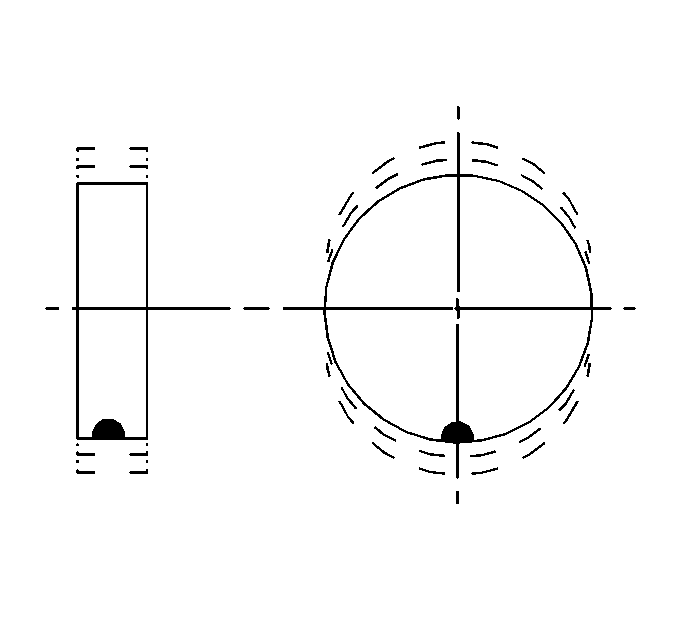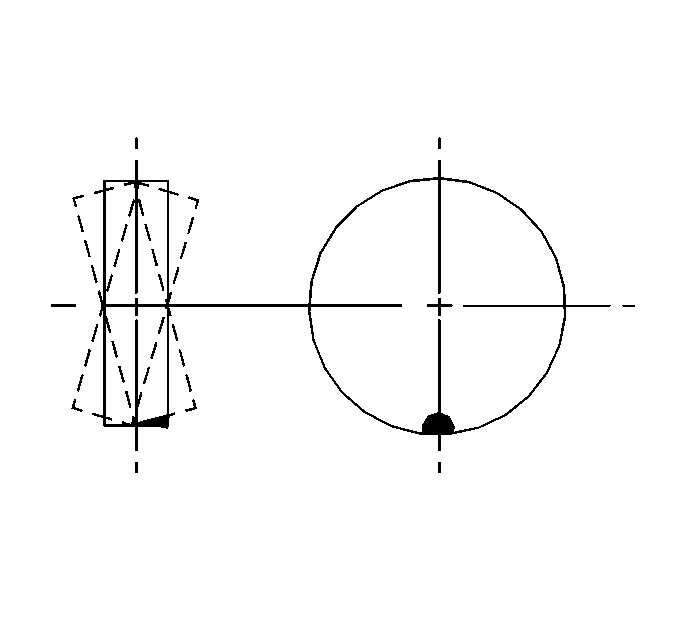
Caution: Failure to adhere to the following precautions before tire balancing
can result in personal injury or damage to components:
| • | Clean away any dirt or deposits from the inside of the wheels. |
| • | Remove any stones from the tread. |
| • | Use coated weights on aluminum wheels. |
Important: The tires can be balanced either on-vehicle or off-vehicle, but the
off-vehicle balancing procedures are recommended. Off-vehicle methods are
better because tire rotation will not affect the balancing. The
off-vehicle balancers are also more accurate than the on-vehicle
balancers. Off-vehicle balancers can perform dynamic balancing
as well as static balancing.
Tire and wheel balancers can drift out of calibration without warning,
or can become inaccurate as a result of abuse. The balancer calibration
should be inspected every two weeks, and whenever the readings
are questionable.
Tire Balancer Calibration Test
- Spin the balancer without a wheel or any of the adapters on the
shaft.
- Inspect the balancer readings.
Specification
0-7 g (0.00-0.25 oz)
- Balance a tire and wheel assembly that is within radial and lateral
tolerances to zero.
- Add an 85 gram (3 oz) test weight to the wheel at
any location.
- Spin the tire and wheel assembly again, noting the readings.
| • | In the static and dynamic modes, the balancer should call for
85 gram 3 ounces of weight, 180 degrees opposite the
test weight. |
| • | In the dynamic mode only, the weight should be called for on the
flange of the wheel opposite the last weight. |
- With the assembly unbalanced to 85 grams (3 oz),
cycle the balancer five times.
- Take the balancer readings:
Specification
Variation: 7 g (0.25 oz) or less
- Index the tire and wheel assembly at four separate locations on
the balancer shaft, 90 degrees apart.
- Cycle the balancer with the assembly at each location.
- Take the balancer readings:
Specification
Variation: 7 g (0.25 oz) or less
Tire Balancing Guidelines
Static and dynamic balance are 2 kinds of tire/wheel balance:

| • | Static balance, also called
single plane balance, affects the distribution of weights around the wheel
circumference. |

| • | Dynamic balance, or two-plane
balance, affects the distribution of weight on each side of the tire/wheel
centerline. |
Most off-vehicle balancers are capable of checking both types of balance
simultaneously.
As a general rule, most vehicles are more sensitive to static imbalance
than to dynamic imbalance, with as little as 14-21 g (0.50-0.75 oz)
capable of inducing a vibration in some vehicles. Vibration induced
by static imbalance will cause a vertical or "bouncing"
motion of the tire.
Dynamic imbalance results in a side-to-side motion of the tire. This
motion is referred to as "shimmy".
| • | Balance all tires as close to zero as possible. |
| • | Carefully follow the wheel balancer manufacturer's instructions
for proper mounting techniques to be used on different types of wheels. |
| • | Regard aftermarket wheels, especially those incorporating universal
lug patterns, as potential sources of runout and mounting problems. |
| • | Use the correct coated weights on aluminum wheels. |
| • | Recheck the tire and wheel assemblies for excessive runout after
they have been corrected and installed. |
| • | Evaluate the vehicle at the complaint speed and note if the vibration
has been corrected. |
| • | If the vibration is still present, or is reduced but still unacceptable,
you may find one of two possibilities: |
| - | Radial or lateral force variation |
Checking Rotor Imbalance-Off-Vehicle
- Measure the diameter and the width of the rotor.
- Mount the rotor on a balancer in the same manner as a wheel.
Important: The rotors can only be inspected for static imbalance. Ignore the dynamic
imbalance reading.
- Inspect for static imbalance.



